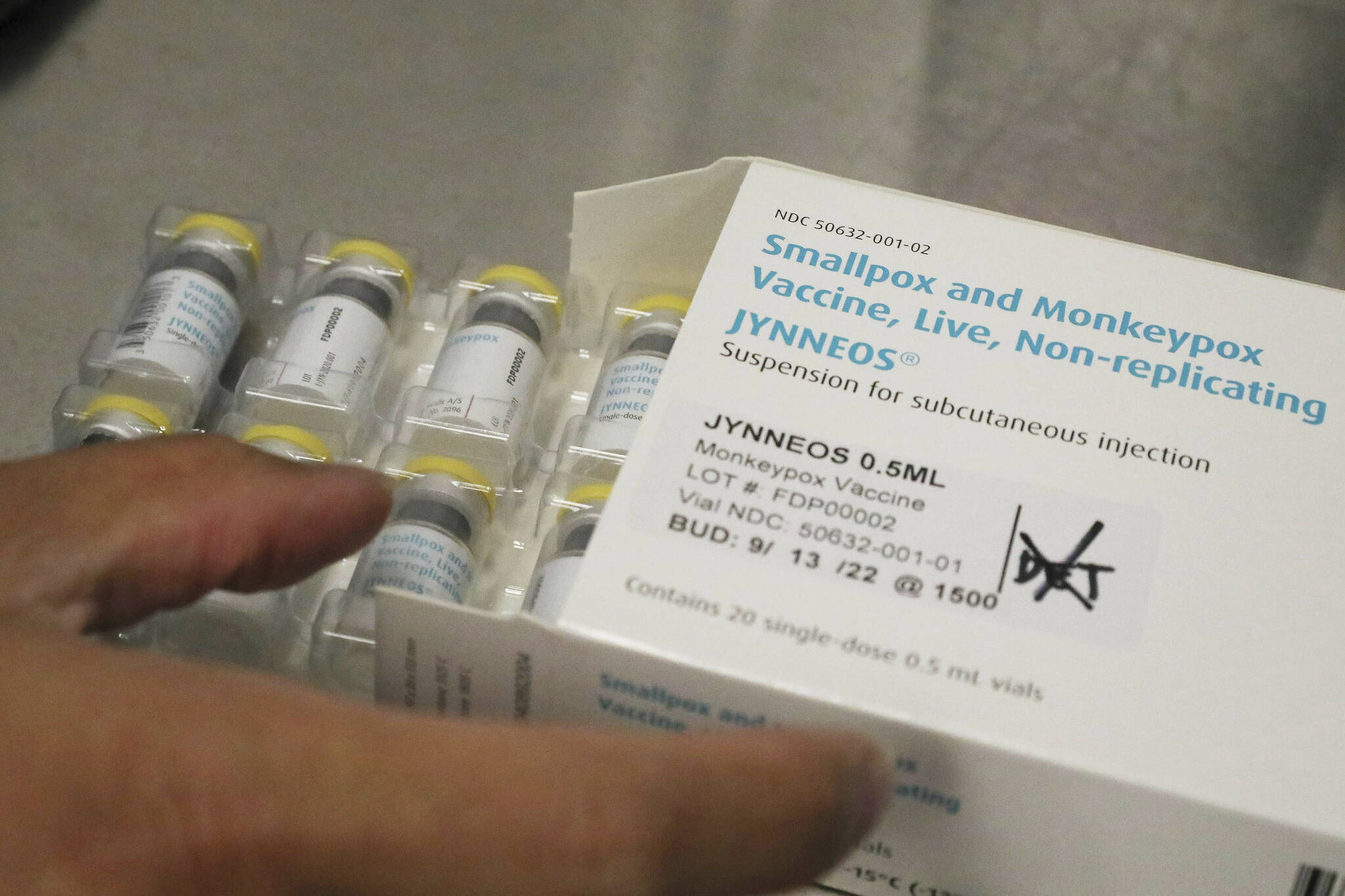During a Public Health ECHO held via Zoom and broadcast live on Facebook on Wednesday, State Epidemiologist Dr. Joe McLaughlin said that, globally, monkeypox daily cases are on a “steep downward trajectory.”
McLaughin shared a graph depicting the amount of daily cases both in the United States and globally. It depicted two very similar trajectories, both spiking around August, then following a consistent downward motion to date.
Daily confirmed cases are shown to have peaked at more than 1,000 globally, and more than 500 in the U.S. As of Tuesday, when the graph is dated, daily cases were around 300 and 100 respectively.
Globally, the Centers for Disease Control and Prevention report around 75,000 total cases of monkeypox confirmed since the start of the outbreak, with 74,000 of those being “in locations that have not historically reported monkeypox.” In the United States, there have been around 28,000 cases as of Thursday.
Alaska reported its first case of monkeypox on July 28. In total, only five cases have been reported in the state. It has been over a month since the last case was reported. The state said that four of the five were located in Anchorage, while the fifth was outside of Anchorage.
Monkeypox vaccines are available in Alaska, but McLaughlin said they are “not recommended for the general public.”
Vaccination is available to people who “self-identify as being at increased risk for infection,” McLaughlin said. “The current epidemiology suggests that people with two or more sexual partners and who are gay, bisexual or other men who have sex with men or transgender people are at increased risk.”
A key symptom of monkeypox is a rash, commonly located around the genitals or other areas like the hands, feet, chest, face and mouth, according to the CDC. Other symptoms of the virus include fever, chills, swollen lymph nodes, exhaustion, muscle aches, headache and respiratory problems like sore throat and cough.
The disease is spread through close, personal contact — often skin-to-skin, according to the CDC. This usually occurs through contact with the rash or with bodily fluids from someone with the virus. This contact includes intimate contact — like oral, anal or vaginal sex — as well as hugging or kissing.
More information about the monkeypox virus can be found on the CDC’s website at cdc.gov/poxvirus/monkeypox. Additional information about monkeypox in Alaska can be found on the Department of Health’s website at health.alaska.gov/dph/Epi/id/Pages/Monkeypox.aspx.
Reach reporter Jake Dye at jacob.dye@peninsulaclarion.com.

